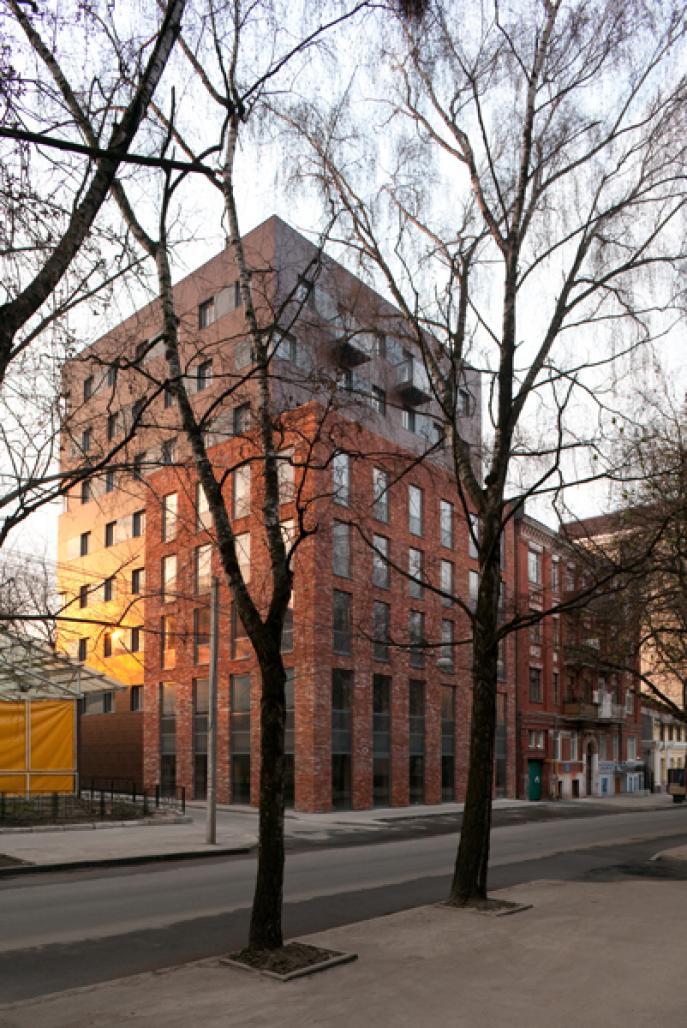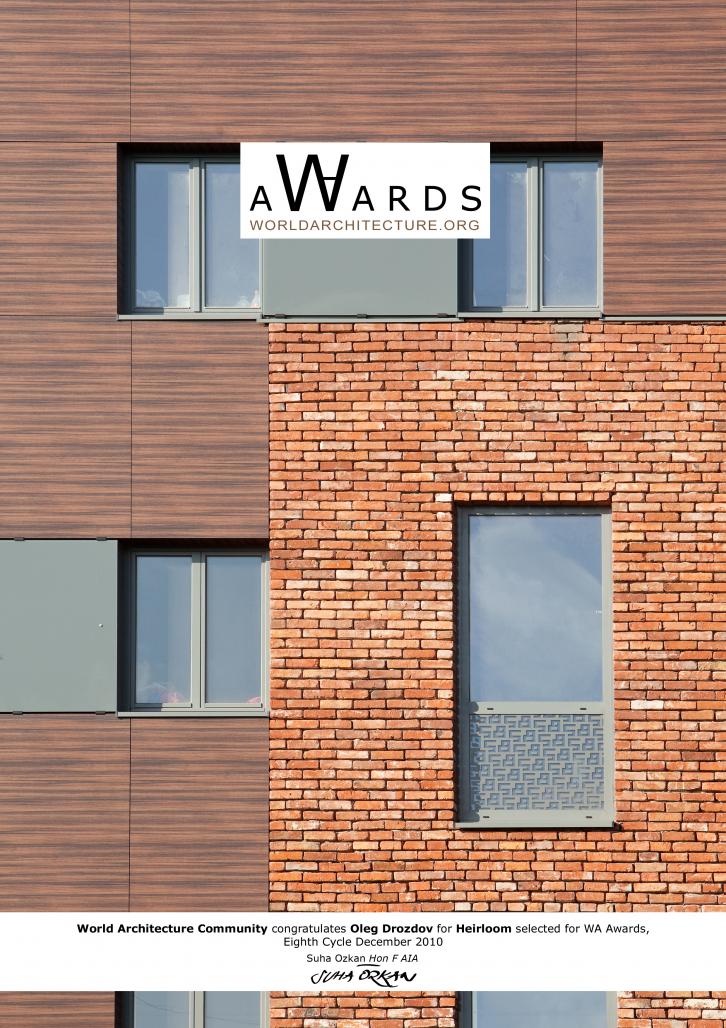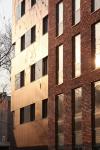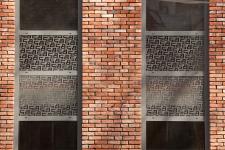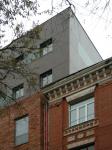This part of the city has a peculiar middle-rise scale, formed in the early twentieth century. The parcel of our small plot was just in keeping with the general land use patterns in the neighbourhood.
The building itself was a little higher that the existing scale. this gave us an idea to introduce a two-part composition, which consists of the main volume and the “superstructure/extension”, retracted from the red line. The main brick volume is followed by the “wooden” layer. Old bricks, taken from the demolished building in the neighbouring street, formed a substrate material for our project. In this way the new building passes on historical “flesh” and cultural code.
Interior layout solutions are simple and sensible. There are only seven apartments, a small office and a few shops in the building. We believe that with such a small number of users, they will be able to establish sustainable neighbourly relations among themselves. Unfortunately, small-scale residential houses like this are not very popular with modern developers.
Brick, “wooden” panels and enameled glass refer to traditional architectural lexicon of the city, such as wooden verandahs and extensions, wrought details. Compositional structure and details have made it possible for the house to merge with the surrounding in such an inconspicuous way that it took citizens some time to become aware of the newly-erected building.
The project illustrates “cultural retrofitting” which might become a founding principle for zoning, stipulating the percentage of old and new materials to be used in construction.
2007
2010
function: residential building with offices and shops
area: 2 110 sq m
materials: recycled brick, façade panels TRESPA, aluminum
irina goydenko, oleg drozdov, aleksandr pominchuk
Heirloom by Oleg Drozdov in Ukraine won the WA Award Cycle 8. Please find below the WA Award poster for this project.
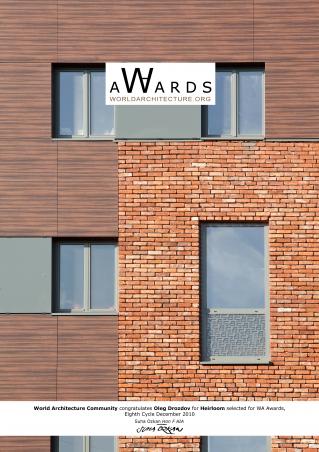
Downloaded 181 times.
